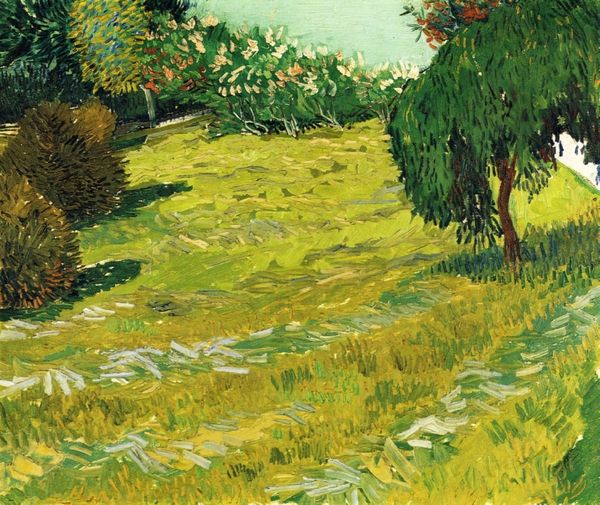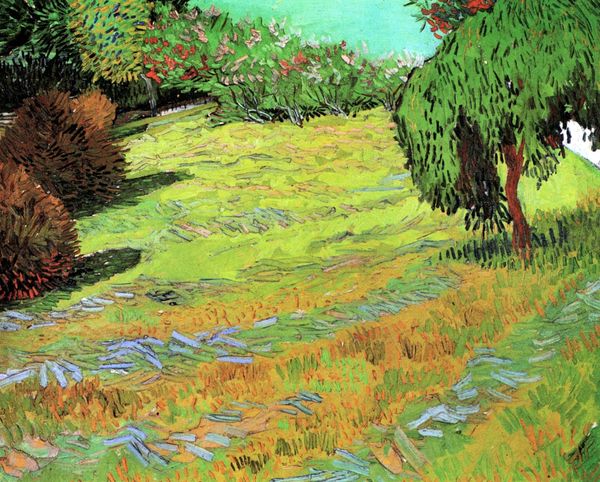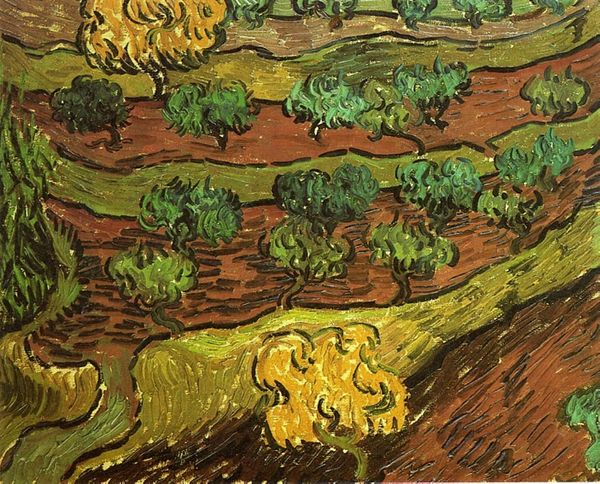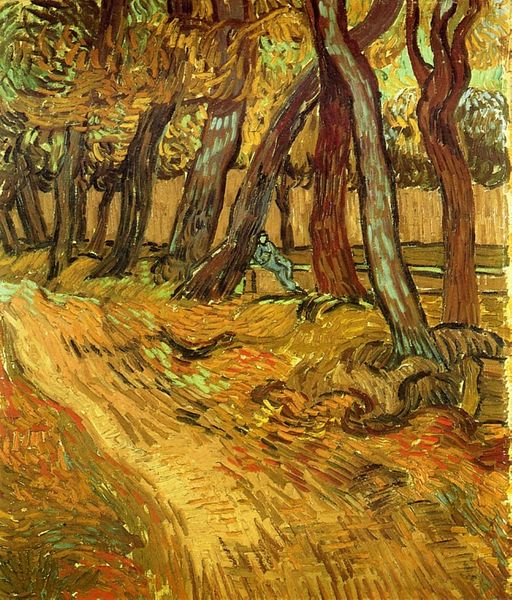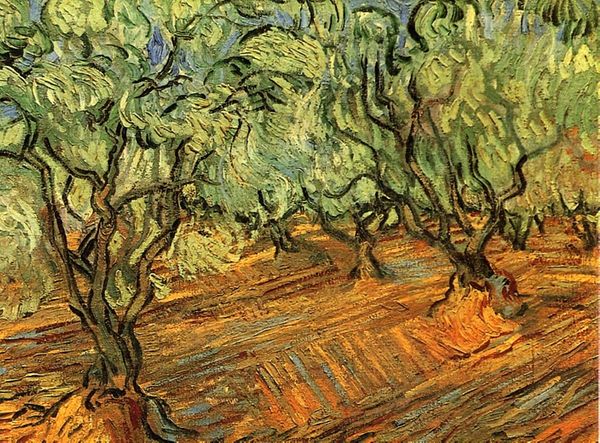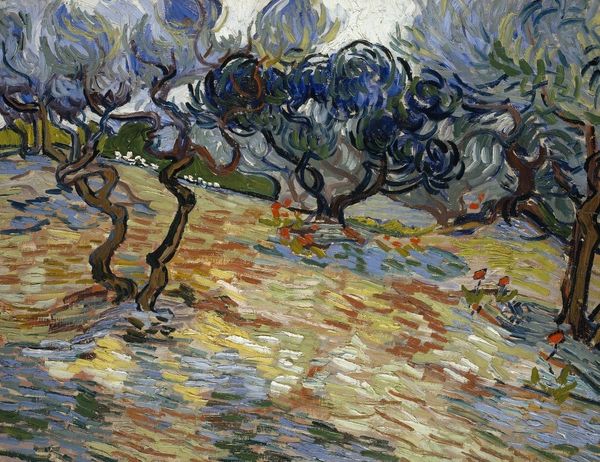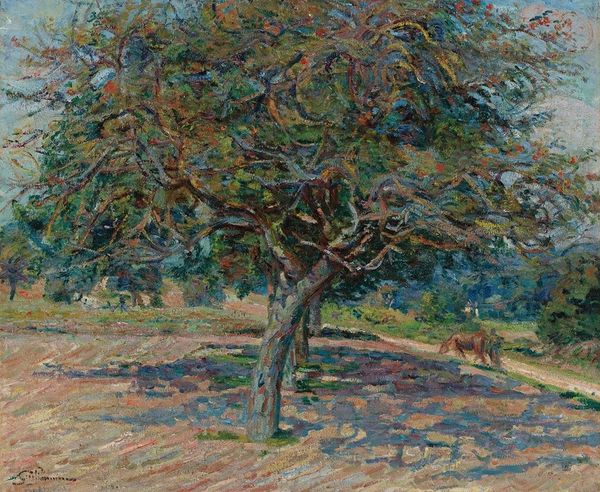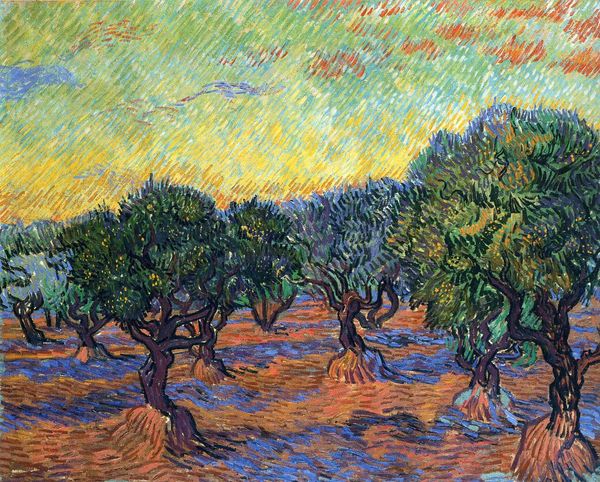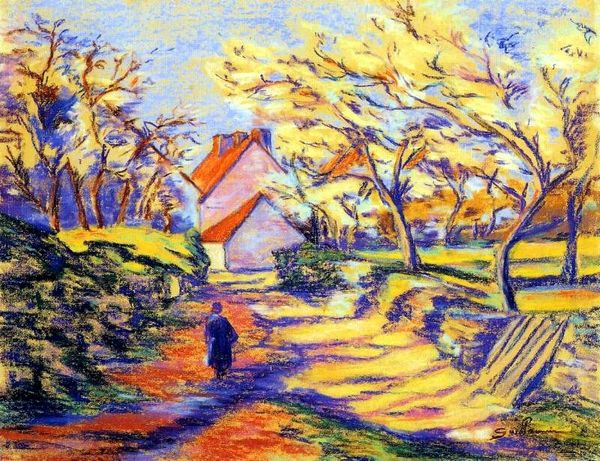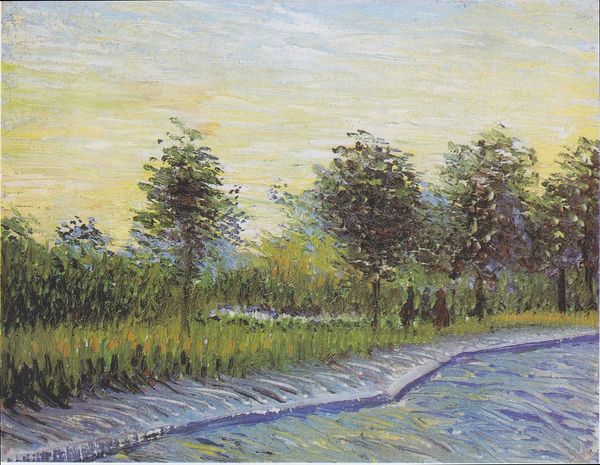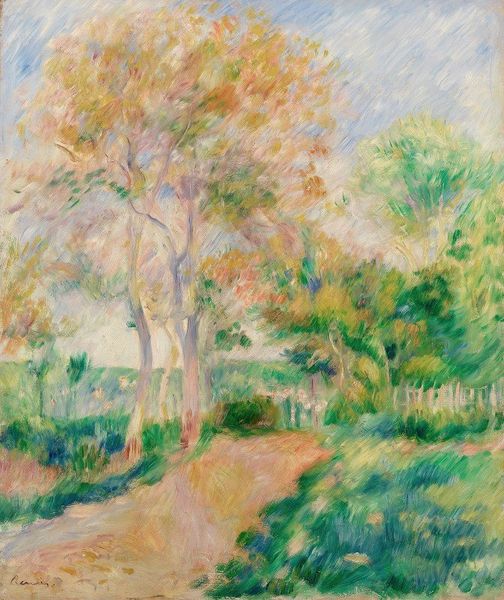
painting, plein-air, oil-paint
#
tree
#
rural-area
#
painting
#
impressionism
#
grass
#
impressionist painting style
#
plein-air
#
oil-paint
#
vehicle
#
landscape
#
impressionist landscape
#
handmade artwork painting
#
road
#
forest
#
naive art
#
post-impressionism
#
realism
Dimensions: 55 x 65 cm
Copyright: Public domain
Curator: Ah, look, here's Van Gogh's "Pollard Willows," painted in 1889. Isn't it luminous? He really captured the light, or the promise of light, in that dirt road. Editor: It feels strangely muted for Van Gogh, doesn't it? I expect that vibrant swirl of madness, but there's a quiet resignation here, even with the bright green. It’s as if he’s observing the constraints of life, the path already laid out. Curator: Perhaps that's the realism sneaking in. It’s definitely post-impressionist, the strokes are looser, but it feels more like he's documenting a scene, trying to feel it. Notice how the pollard willows are pruned in such an interesting way – they almost resemble figures, their bare limbs reaching. Editor: Indeed. "Pollard willows." They undergo a radical process of pruning to promote dense growth. So this depicts a cycle of imposed transformation for utility. How many times have we been forced to conform in ways that alter our essence, only to yield produce for the machine? Curator: Wow, that's… heavy. I mostly thought they looked funny! They’re also reflecting how nature adapts and survives even in constraint. I find the colors soothing. I can almost smell the earthy tones; he brings a different light to a subject other painters may have dismissed as ugly or utilitarian. Editor: Consider that light though. It highlights the stark contrast between the manicured trees and the path. It’s suggestive of the forces shaping rural labor. This piece reveals a dialogue between the artist and the social conditions of the time. Curator: That makes so much sense when you point it out. I do believe, however, he’s in love with the shape of these gnarly, almost grotesque forms—that makes me think it could symbolize the enduring beauty of even a working landscape. Van Gogh has the gift of pointing us at beauty, or maybe interest, wherever it is. Editor: Absolutely, the value placed upon the ugly to find resilience, or rather celebrate what persists as we create spaces with pre-determined and confined limits of production and access, like rural space and art spaces themselves. Curator: In a way it gives a whole new dimension to just “liking” a painting. Thank you! Editor: Likewise! Now that's an analysis for the ages.
Comments
No comments
Be the first to comment and join the conversation on the ultimate creative platform.
